As somebody who keeps fish as their hobby, you will at some point, and probably quite often, experience high ammonia levels in your aquarium, which is not good!
Ammonia is a compound of both nitrogen and hydrogen, it is a colorless gas that releases toxins and deadly chemicals into salt water, which can cause serious harm to your fish.
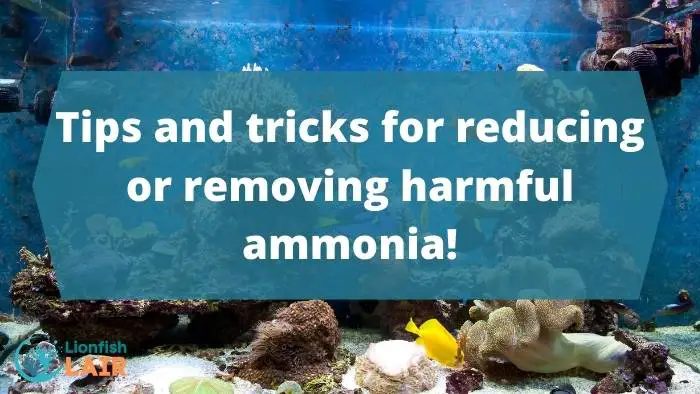
Unfortunately, the early signs of ammonia spikes in your tank will not be easy to identify.
However, if you discover your fish becoming slow and lethargic, or on the brink of death, check your aquarium ammonia levels immediately!
How to Reduce Ammonia Levels in a Saltwater Aquarium (List)
If you have an ammonia problem in your home aquarium then you need to act quickly, and the best way of achieving this is by following this guide, let's dive in!
Cycle the Tank
When you first acquire a new tank, it probably contains low amounts of beneficial bacteria. This kind of bacteria is needed to reduce ammonia levels in the water.
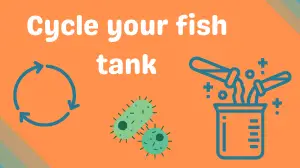
Cycling is the term that is used for introducing friendly bacteria into your aquarium. The bacteria will convert fish waste into nitrate, rather than ammonia, making it far less harmful.
After you have cycled the tank, expect to be waiting between 4 to 8 weeks for the bacteria colonies to grow.
Salt Water Changes
Aquarium water typically evaporates, becoming dirty and causing many issues for aquariums that are particularly receptive to high ammonia levels.
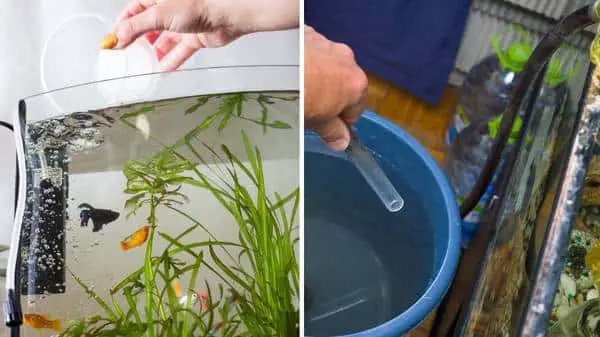
There are two great conditioners on the market that are popular with hobbyists and effective at keeping ammonia levels under control. They are:
- Seachem Prime Fresh and Saltwater Conditioner.
- Fluval Water Conditioner for Aquariums.
- API MARINE STRESS COAT Saltwater Aquarium Water Conditioner.
Correct Temperature and pH
You should keep the water in your aquarium at a consistent temperature and the pH level should be in a reasonably high range.
Now, to remove ammonia, begin to drop the temperature in your tank slowly, and only to a temperature that your fish can handle. It will likely result in a bad situation for your aquarium community if you reduce the temperature too much.
You should be testing the quality of your water on a weekly basis, and if you can, twice a week. Here are some affordable pH strips you can use:
By keeping the pH level between 8.0 and 8.5 you will be maintaining the ammonia level. If the pH level is low in your tank, add carbonate to the salt water, this will increase the pH and remove the ammonia.
Use a Good Filter
Filters these days can be of poor quality and actually encourage the growth of harmful bacteria, killing off the good bacteria in the process. This makes purchasing the right water filter so important.
Before you purchase any filter, whether it be online or in store, you must ensure that it promotes the growth of good bacteria and helps reduce and remove high ammonia levels.
This is one of the most important ways you can ensure the health of your fish, not just for reducing ammonia.

Aquarium filters are incredibly personal to the hobbyist and also the aquarium they are going to be working in. So, make sure that you spend plenty of time researching and finding the best filter for your aquarium that will remove and prevent as much ammonia as possible.
Once acquired and cleaned properly, you can set up your filter and begin removing ammonia.
Increase Your Tank's Aeration
By increasing the aeration in your aquarium, you will be naturally removing the level of ammonia in your tank, this is because the ammonia will transfer from the water into the air bubbles and pockets.
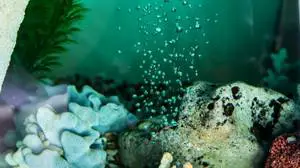
Fortunately, there are many ways in which you can increase the aeration in your aquarium. Firstly, you can use an air pump, they are reasonably priced and widely available to purchase:
Alternatively, you can use a hang-on-the-back filter, which naturally increases the aeration. You can also use a spray bar to increase aeration. They are similar to air stones and will work well at producing air pockets within your tank.
Fish Waste Control
Leftover fish food, food waste from fish, and organic plants will all release ammonia in your aquarium, and when left for too long without regular cleaning you are simply inviting problems for your tank and ammonia levels.
This is why you need to stay on top of this, do not overfeed your fish, and make sure their leftover food has been removed quickly.
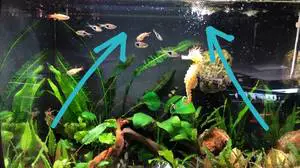
By testing your water on a regular basis for ammonia and nitrate spikes, you will be ensuring the safety of your tank and its inhabitants.
Try and keep the nitrate levels at 40 ppm and the ammonia level at zero for your saltwater aquarium.
Use a Larger Fish Tank
Large numbers of fish in small aquariums will only lead to one thing, extremely high ammonia levels. So, why is that?

Well, it is pretty simple, more fish means more natural waste production, which results in high ammonia levels within your aquarium.
If this is you, then you probably should upgrade your tank size, which will help dissipate the ammonia and eventually completely dilute it to a safe level.
Add Beneficial Bacteria
If you own a fairly new aquarium, it probably has high amounts of ammonia due to it being new and having low amounts of beneficial bacteria, which tend to grow in established tanks.
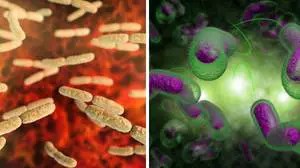
If you can source some, you should move some gravel or substrate from an already established tank into your new one. This will add the beneficial bacteria from one tank to your new one and it will begin to grow quickly.
Neutralizing Drops
You can remove ammonia temporarily from your aquarium by adding neutralizing drops, these drops will not remove the harmful ammonia, but instead, it will make it harmless instead.
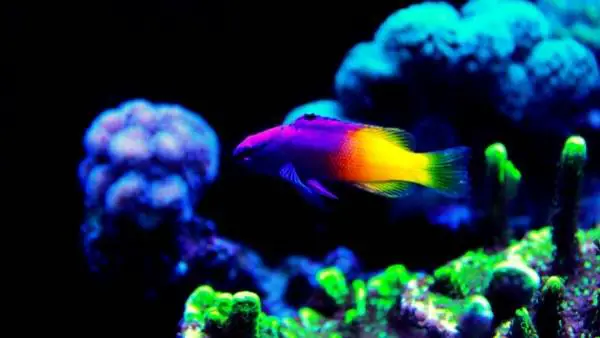
Below are some great options:
Final Thoughts
After trying and testing these methods ourselves, we can confidently advise all of them for effectively removing or at least preventing harmful ammonia from breaking out into your aquarium.
Ammonia is very dangerous to your fish and should always be taken seriously.
The levels of ammonia will rise at an incredibly quick rate if you are not switched on to the issue!
Saltwater Ammonia Removal FAQs (Frequently Asked Questions)
We have gathered the most commonly asked and sensible questions posed by a variety of different hobbyists related to controlling ammonia levels in your aquarium. Here are the answers:
Why Does Ammonia Harm Fish?
The ammonia will travel from the water and into the fish, which will then begin causing damage to the cells of the fish and more.
Can Fish Recover from Ammonia Poisoning?
Unfortunately, no, there is currently no way of curing fish with ammonia poisoning. The best thing you can do is follow this guide to find out ways of preventing ammonia from appearing and spiking in your tank.
Do Snails Reduce Ammonia?
Absolutely not, snails actually will cause more ammonia in your tank from their waste.
Will a Protein Skimmer Reduce Ammonia?
No, a protein skimmer will not remove ammonia, instead, it removes the organic compounds that decompose into the deadly ammonia.
